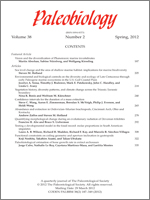The late Mesozoic through early Cenozoic is an interval of significant biologic turnover and ecologic reorganization within marine assemblages, but the timing and causes of these changes remain poorly understood. Here, we quantify the pattern and timing of shifts in the diversity (richness and evenness) and ecology of local (i.e., sample level) mollusk-dominated assemblages during this critical interval using field-collected and published data sets from the U.S. Gulf Coastal Plain. We test whether the biologic and ecologic patterns observed primarily at the global level during this time are also expressed at the local level, and whether the end-Cretaceous (K/Pg) mass extinction and recovery moderated these trends. To explore whether environment had any effect on these patterns, we examine data from shallow subtidal and offshore settings.
Assemblages from both settings recovered to pre-extinction diversity levels rapidly, in less than 7 million years. Following initial recovery, diversity remained unchanged in both settings. The trajectory of ecological restructuring was distinct for each setting in the wake of the K/Pg extinction. In offshore assemblages, the abundance and number of predatory carnivorous taxa dramatically increased, and surficial sessile suspension feeders were replaced by more active suspension feeders. In contrast, shallow subtidal assemblages did not experience ecological reorganization following the K/Pg extinction. The distinct ecological patterns displayed in each environment follow onshore-offshore patterns of innovation, whereby evolutionary novelties first appear in onshore settings relative to offshore habitats. Increased predation pressure may explain the significant ecological restructuring of offshore assemblages, whereby the explosive radiation of predators drove changes in their prey. Habitat-specific ecological restructuring, and its occurrence solely during the recovery interval, implies that disturbance and incumbency were also key in mediating these ecological changes.





